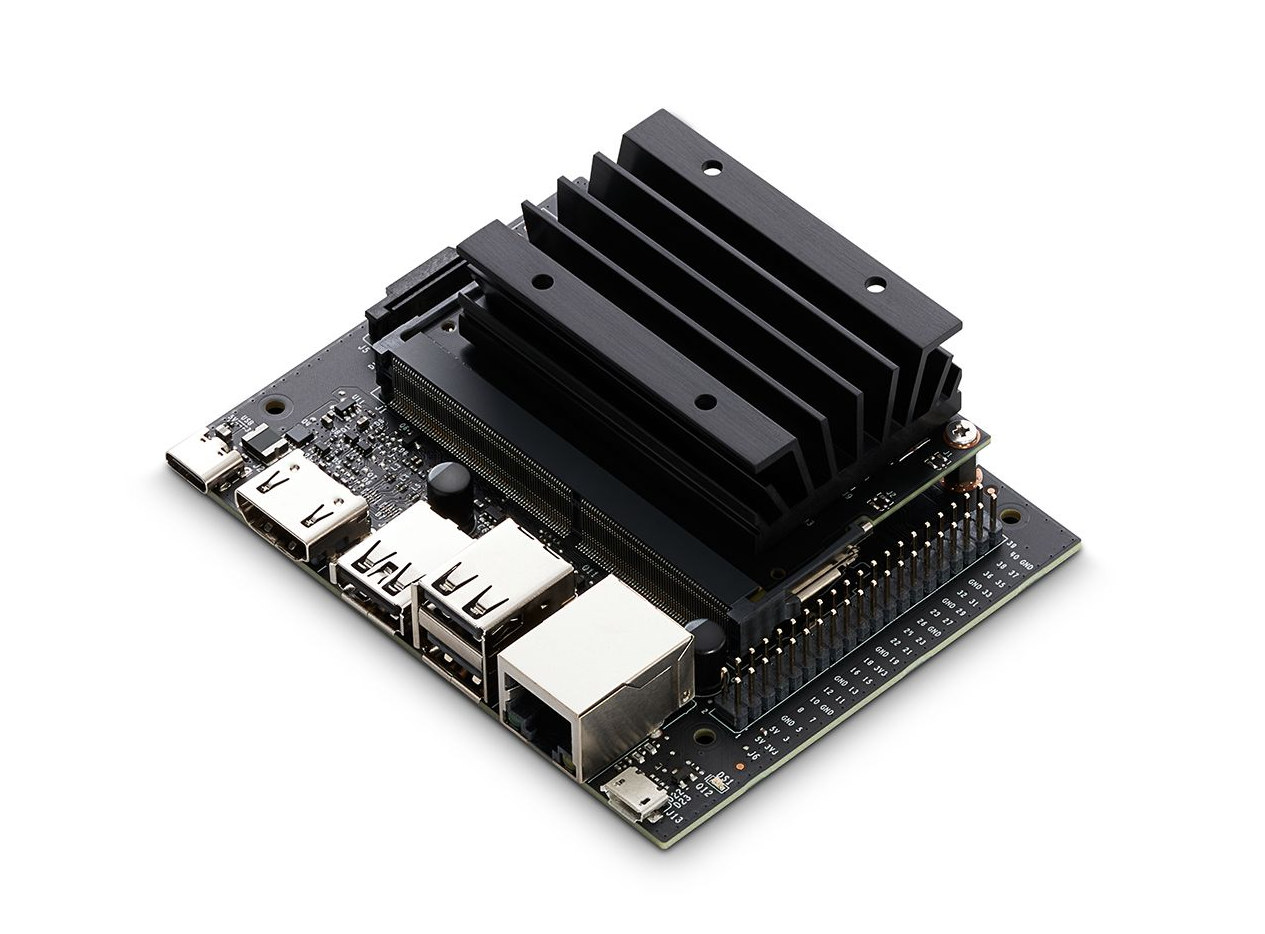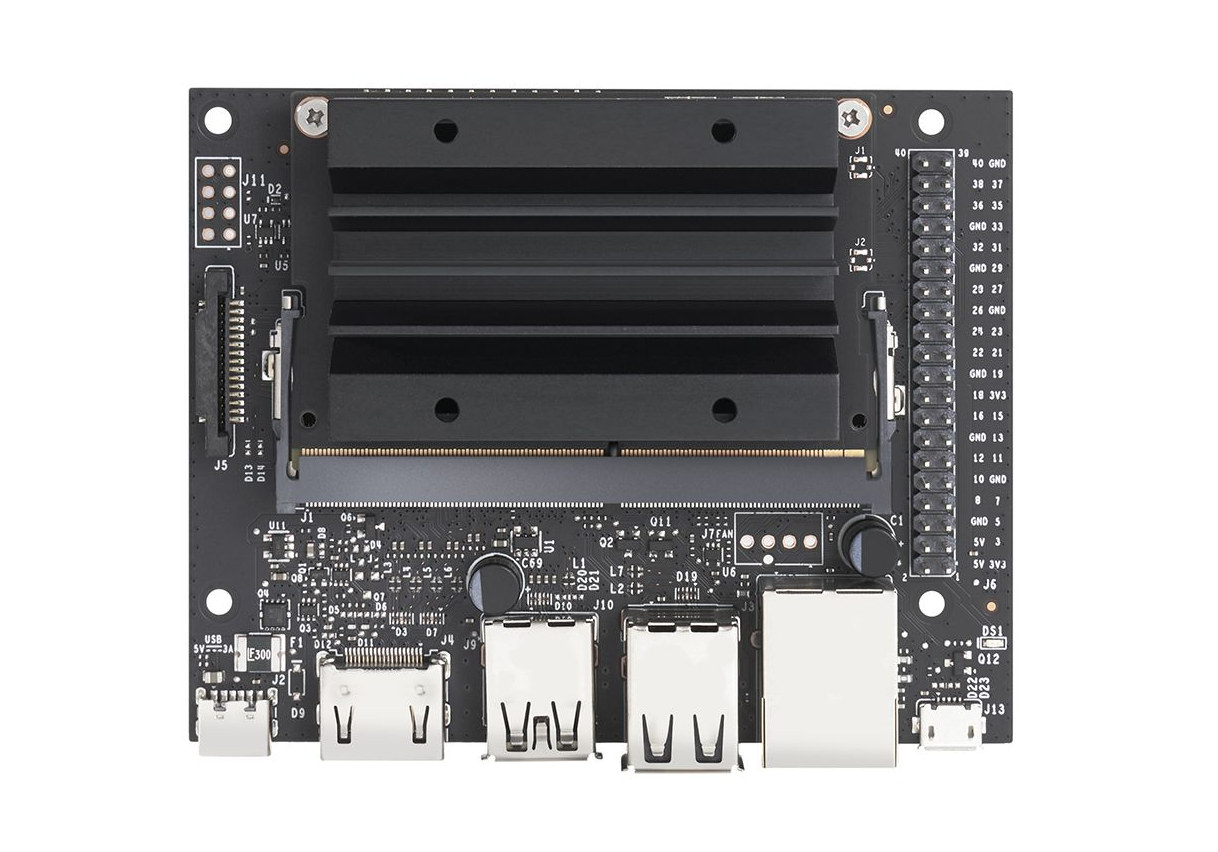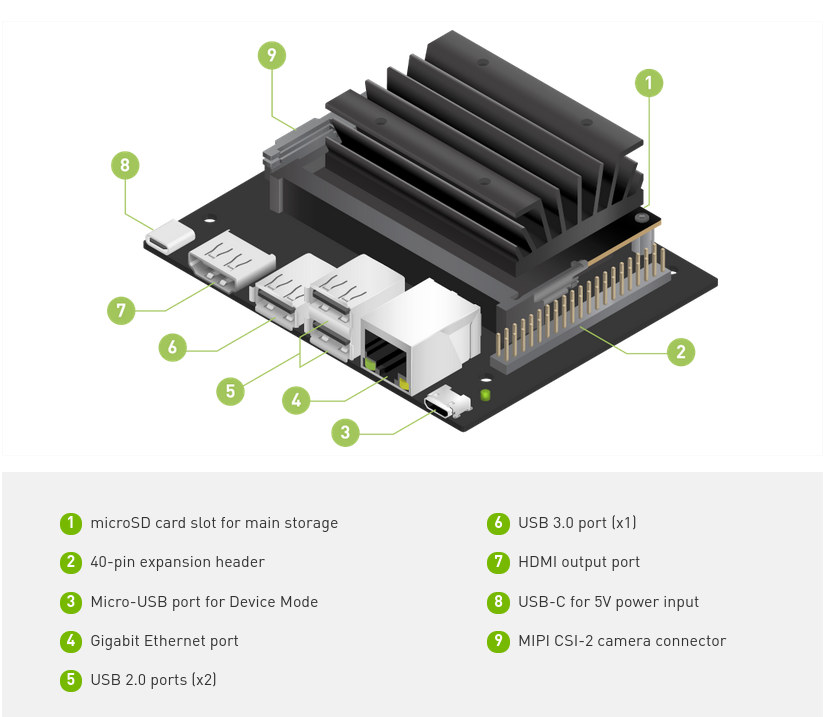NVIDIA Jetson Nano Developer kit was introduced in March 2019 for $99. With a quad-core Cortex-A57 processor, a 128-core Maxwell GPU, and 4GB LPPDR4 RAM, it’s a great low-cost AI platform as we wrote in our Jetson Nano getting started guide where we show how to perform inferences on still images and an RTSP video stream.
The company has now gone further in providing an affordable AI computer for developers with the launch of NVIDIA Jetson Nano 2GB Developer Kit with similar features except for the 2GB RAM, and pricing starting at $54 without a wireless adapter or $59 with 802.11b/g/n/ac WiFi 5 USB dongle. Pre-orders are open on sites like Amazon or Seeed Studio and shipping is scheduled to start at the end of the month.

- Jetson Nano 2GB CPU Module
- 128-core Maxwell GPU
- Quad-core Arm A57 processor @ 1.43 GHz
- System Memory – 2 GB 64-bit LPDDR4 25.6 GB/s
- Storage – MicroSD card slot
- Video Encode – 4K @ 30 | 4x 1080p @ 30 | 9x 720p @ 30 (H.264/H.265)
- Video Decode – 4K @ 60 | 2x 4K @ 30 | 8x 1080p @ 30 | 18x 720p @ 30 (H.264/H.265)
- Dimensions – 70 x 45 mm
- Baseboard
- 260-pin SO-DIMM connector for Jetson Nano module.
- Video Output – HDMI 2.0
and DP 1.4 - Connectivity
- Gigabit Ethernet (RJ45)
+ 4-pin PoE header - Optional 802.11ac wireless adapter and extension cable
- Gigabit Ethernet (RJ45)
- USB – 1x USB 3.0 ports, 2x USB 2.0 ports, 1x USB 2.0 Micro-B port for power or device mode
- Camera I/F – 1x MIPI CSI-2 DPHY lanes compatible with Raspberry Pi Camera Module V2 and HQ camera
- Expansion
M.2 Key E socket (PCIe x1, USB 2.0, UART, I2S, and I2C) for wireless networking cards- 40-pin expansion header with GPIO, I2C, I2S, SPI, UART signals
- 12-pin header for power and related signals, UART
- Misc – Power LED, 4-pin fan header
- Power Supply – 5V/3A via
power barrelUSB-Cor 5V/2A via micro USB port selectable by jumper
- Dimensions – 100 x 80 x 29 mm (with heatsink)
As we can see from the specifications, the new developer kit does not only lowers RAM capacity to lower the price, as NVIDIA removes DisplayPort output, the M.2 socket, and PoE support. The four USB 3.0 ports have now been replaced by a 1x USB 3.0 port and 2x USB 2.0 ports, and the board now requires a 5V USB-C power supply for power. Compared to NVIDIA Jetson Nano Developer Kit-B01 launched earlier this year with two CSI camera connectors, Jetson Nano 2GB board only comes with one camera connector.
Since the M.2 socket is gone, the only option to add WiFi is by using one of the USB ports, meaning you’d be left with two USB ports to play with. The new board benefit from the software ecosystem created for the earlier boards, and you’ll find NVIDIA JetPack and resources to get started on NVIDIA developer website. The image is slightly different and optimized for low memory usage, as while it’s still based on Ubuntu it features a low memory footprint LXDE desktop environment with Openbox window manager.

Jean-Luc started CNX Software in 2010 as a part-time endeavor, before quitting his job as a software engineering manager, and starting to write daily news, and reviews full time later in 2011.
Support CNX Software! Donate via cryptocurrencies, become a Patron on Patreon, or purchase goods on Amazon or Aliexpress






